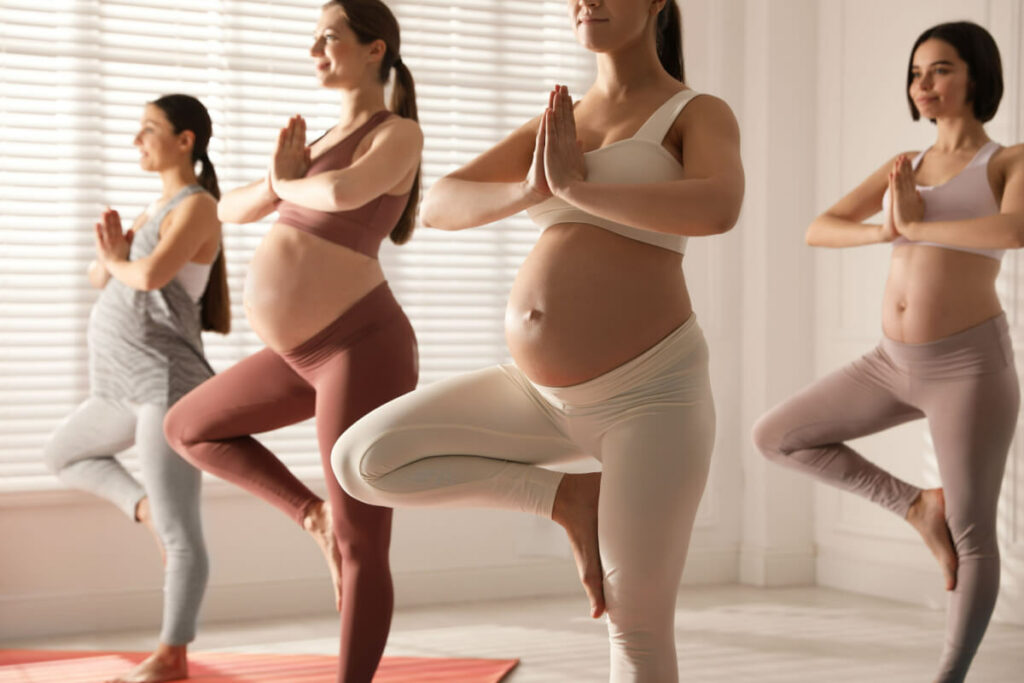If you recently learned you’re pregnant, you’re likely feeling a whirlwind of emotions. You also likely have a million questions about preparing for childbirth. Thankfully, there are steps you can take to manage stress and prepare both mentally and physically for childbirth. Continue reading to learn how to prepare for the labor process and your new baby.

7 ways to prepare for labor and delivery
Bringing a child into the world can be taxing on the mind and body. Taking care of yourself by making lifestyle changes can help you feel better prepared for your pregnancy, delivery, and parenthood. (20)
1. Create a birth plan
A birth plan is a document created by you and your partner that lets your healthcare provider and delivery team know your preferences for childbirth. Topics you can include in your birth plan include:
- Where you would like to give birth
- Who you would like to be present during your delivery
- Your preferences for pain management
- Your preferences for any medical interventions
- When and by whom the umbilical cord will be cut
- How you plan to feed your baby (19)
2. Eat a healthy diet
Eating a balanced diet is always important; however, it is especially important during pregnancy (10) Eating a balanced diet will ensure your baby gets the nutrients they need for healthy growth and development. (10) Eating well will also help you gain a healthy amount of weight and reduce your chances of developing diabetes, high blood pressure, anemia (low iron), and other pregnancy-related complications. Additionally, eating a balanced diet while pregnant can help to:
- Increase energy
- Improve sleep
- Minimize morning sickness
- Reduce the risk of catching a cold or flu (10)(14)
Important nutrients
Nutrients are naturally occurring substances found in food that are required by the body for normal functioning. They include macronutrients (carbohydrates, fats, proteins) and micronutrients (vitamins, minerals, and phytonutrients). Your body requires higher amounts of nutrients during pregnancy, especially:
- Calcium
- Folic acid
- Iron
- Vitamin D (10)(14)

Eating a balanced diet will ensure your baby gets the nutrients they need for healthy growth and development. (10)
3. Get adequate rest
Getting enough rest is important for both mother and baby.
Not getting enough sleep can lead to fatigue and daytime sleepiness. Additionally, lack of sleep can also negatively impact memory, appetite, mood, and decision-making, which are all important when preparing for a new baby. (12)
Chronic sleep deprivation, or not getting enough sleep for an extended period of time, can weaken your immune system, impacting the health of both parent and baby. (13) Sleep also plays a vital role in blood sugar regulation. Therefore, getting adequate sleep while pregnant may help to prevent the development of diabetes during pregnancy (gestational diabetes). (3)(12)
Did you know? Adequate sleep reduces pain and the risk of complications (15)
4. Pack your hospital/birth center bag
It can be very hectic and easy to forget things during labor. Packing a bag to take with you ahead of time can help you ensure you will be prepared when your baby arrives. The lists below include common items you may want to pack for yourself and your baby.

5. Practice mindfulness and meditation
Anxiety and fear around the process of childbirth can make the experience of labor and delivery more painful. (2) Incorporating mindfulness and meditation into your birth plan and leading up to your due date may help make your pregnancy and delivery experience more manageable. (2)
A randomized controlled trial including 30 women with low-risk pregnancies found that mindfulness training targeted towards fear reduction in the childbirth process may improve the experience of childbirth and prevent postpartum depression. (2)
Did you know? Having anxiety and fear about the childbirth process towards the end of your pregnancy can increase the risk of requiring an emergency cesarean delivery. (7)

6. Stay physically active
Getting regular exercise during pregnancy has many benefits for both you and your baby, including:
- Easing constipation
- Decreasing your risk of gestational diabetes, preeclampsia, and cesarean delivery
- Improving your general fitness and strengthening your heart and blood vessels
- Helping you lose pregnancy weight after your baby is born
- Promoting healthy pregnancy weight gain (18)
Types of exercise safe for pregnancy
Your body goes through numerous changes during pregnancy, which can affect what types of exercise you can do safely. Types of physical activity that are considered to be generally safe during pregnancy include:
- Modified pilates: Prenatal pilates can help you prepare for labor and delivery by reducing pain and stress, and strengthening your pelvic floor.
- Modified yoga: Prenatal yoga can help you prepare for childbirth by reducing stress and improving flexibility. Yoga focuses on breathwork and mindfulness, which may help reduce labor pain and the risk of developing complications.
- Stationary bicycling: Stationary biking is a safe cardio workout during pregnancy, as your growing belly can impact your balance and make you more prone to falling.
- Swimming and water workouts: Water exercises can provide a full-body workout. The water supports your weight, minimizing the chance of injury and muscle strain.
- Walking: Brisk walking or hiking is a low-impact, total-body workout that is easy on the joints and muscles. (1)(5)(11)(17)(18)
7. Take a childbirth class
It’s common to feel overwhelmed with information when trying to learn about pregnancy, childbirth, and postpartum life. Childbirth education classes can help you and your partner feel more prepared for childbirth and caring for your new baby. (16)
Childbirth education classes usually include education on the following:
- Birthing positions
- Breastfeeding
- Caring for a newborn
- Family, social support, and resources
- How to navigate the hospital or birthing center once you arrive
- How to prepare a birth plan
- Mental health during and after pregnancy
- Mindfulness training
- Pain relief options
- Pain relief techniques
- Postpartum care
- Relaxation techniques
- Supplies needed if preparing for a homebirth
- The labor and delivery process
- What to expect from the various stages of pregnancy (20)
The bottom line
The pregnancy and childbirth process can be overwhelming and scary. However, you can prepare your body and mind to make the process easier both mentally and physically. You can do so by eating a healthy diet, getting adequate rest, preparing your hospital bag ahead of time, staying physically active, and taking a childbirth class.
- Anzman-Frasca, S., Ventura, A. K., Ehrenberg, S., & Myers, K. P. (2018). Promoting healthy food preferences from the start: A narrative review of food preference learning from the prenatal period through early childhood. Obesity Reviews: An Official Journal of the International Association for the Study of Obesity, 19(4), 576–604.
- Dietary guidelines for Americans (2020-2025). (2020). https://www.dietaryguidelines.gov/
- Janssen, L. K., Duif, I., van Loon, I., de Vries, J. H. M., Speckens, A. E. M., Cools, R., & Aarts, E. (2018). Greater mindful eating practice is associated with better reversal learning. Scientific Reports, 8(1), 5702.
- Keng, S.-L., Smoski, M. J., & Robins, C. J. (2011). Effects of mindfulness on psychological health: A review of empirical studies. Clinical Psychology Review, 31(6), 1041–1056.
- Kristeller, J. L., & Jordan, K. D. (2018). Mindful eating: Connecting with the wise self, the spiritual self. Frontiers in Psychology, 9, 1271.
- Leung, A. K., Marchand, V., Sauve, R. S., & Canadian Paediatric Society, Nutrition and Gastroenterology Committee. (2012). The “picky eater”: The toddler or preschooler who does not eat. Paediatrics & Child Health, 17(8), 455–460.
- Łoboś, P., & Januszewicz, A. (2019). Food neophobia in children. Pediatric Endocrinology, Diabetes, and Metabolism, 25(3), 150–154.
- Merriam-Webster. (n.d.). Definition of “whole food.” https://www.merriam-webster.com/dictionary/whole%20food
- Miller, C. K. (2017). Mindful eating with diabetes. Diabetes Spectrum: A Publication of the American Diabetes Association, 30(2), 89–94.
- Miller, C. K., Kristeller, J. L., Headings, A., & Nagaraja, H. (2014). Comparison of a mindful eating intervention to a diabetes self-management intervention among adults with type 2 diabetes: A randomized controlled trial. Health Education & Behavior: The Official Publication of the Society for Public Health Education, 41(2), 145–154.
- Mills, S., Brown, H., Wrieden, W., White, M., & Adams, J. (2017). Frequency of eating home cooked meals and potential benefits for diet and health: Cross-sectional analysis of a population-based cohort study. The International Journal of Behavioral Nutrition and Physical Activity, 14(1), 109.
- Mitchell, G. L., Farrow, C., Haycraft, E., & Meyer, C. (2013). Parental influences on children’s eating behaviour and characteristics of successful parent-focussed interventions. Appetite, 60(1), 85–94.
- National Institute of Diabetes and Digestive and Kidney Diseases. (2019). Helping your child: Tips for parents and other caregivers. https://www.niddk.nih.gov/health-information/weight-management/healthy-eating-physical-activity-for-life/helping-your-child-tips-for-parents
- National Institutes of Health. (2019). Child nutrition. MedlinePlus; National Library of Medicine. https://peelregion.ca/children-parenting/pregnancy
- Nelson, J. B. (2017). Mindful eating: The art of presence while you eat. Diabetes Spectrum: A Publication of the American Diabetes Association, 30(3), 171–174.
- Scaglioni, S., De Cosmi, V., Ciappolino, V., Parazzini, F., Brambilla, P., & Agostoni, C. (2018). Factors influencing children’s eating behaviours. Nutrients, 10(6).
- Sharf, R. H. (2015). Is mindfulness Buddhist? (and why it matters). Transcultural Psychiatry, 52(4), 470–484.
- Tiwari, A., Aggarwal, A., Tang, W., & Drewnowski, A. (2017). Cooking at home: A strategy to comply with U.S. dietary guidelines at no extra cost. American Journal of Preventive Medicine, 52(5), 616–624.
- U.S. Department of Agriculture. (2022). Healthy eating for kids. https://www.myplate.gov/tip-sheet/healthy-eating-kids
- Warren, J. M., Smith, N., & Ashwell, M. (2017). A structured literature review on the role of mindfulness, mindful eating and intuitive eating in changing eating behaviours: Effectiveness and associated potential mechanisms. Nutrition Research Reviews, 30(2), 272–283.





